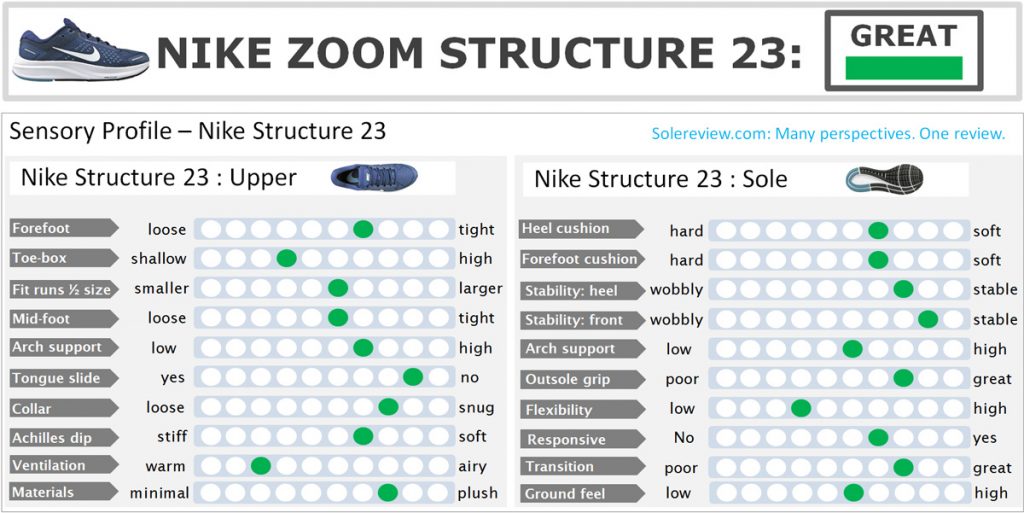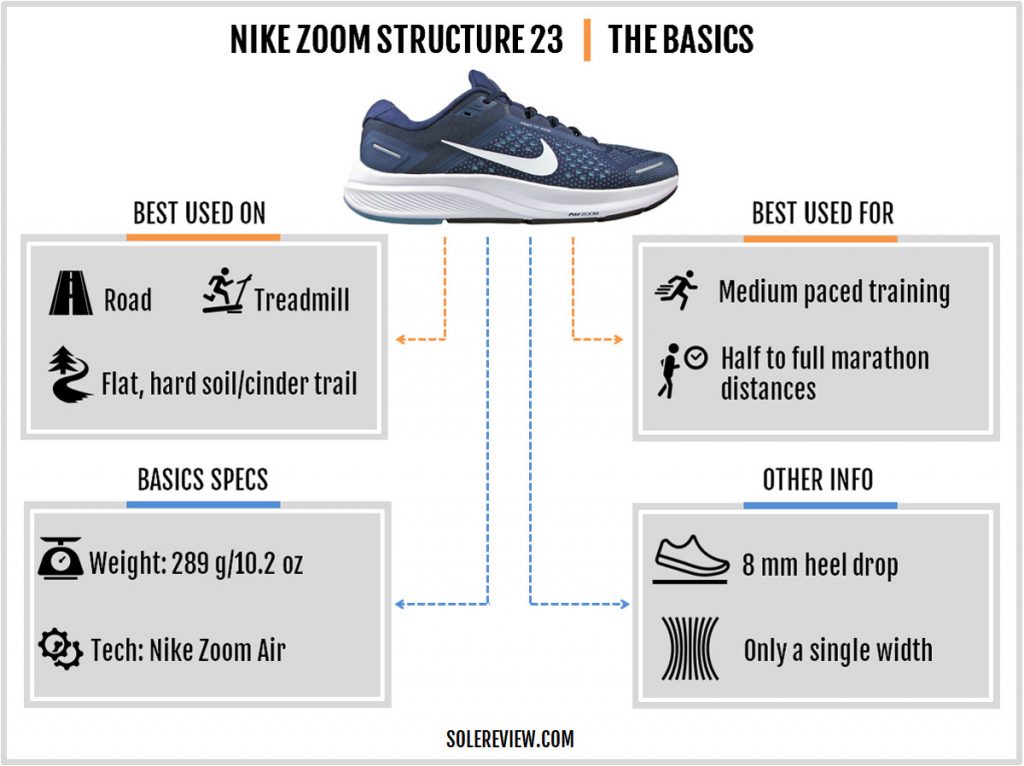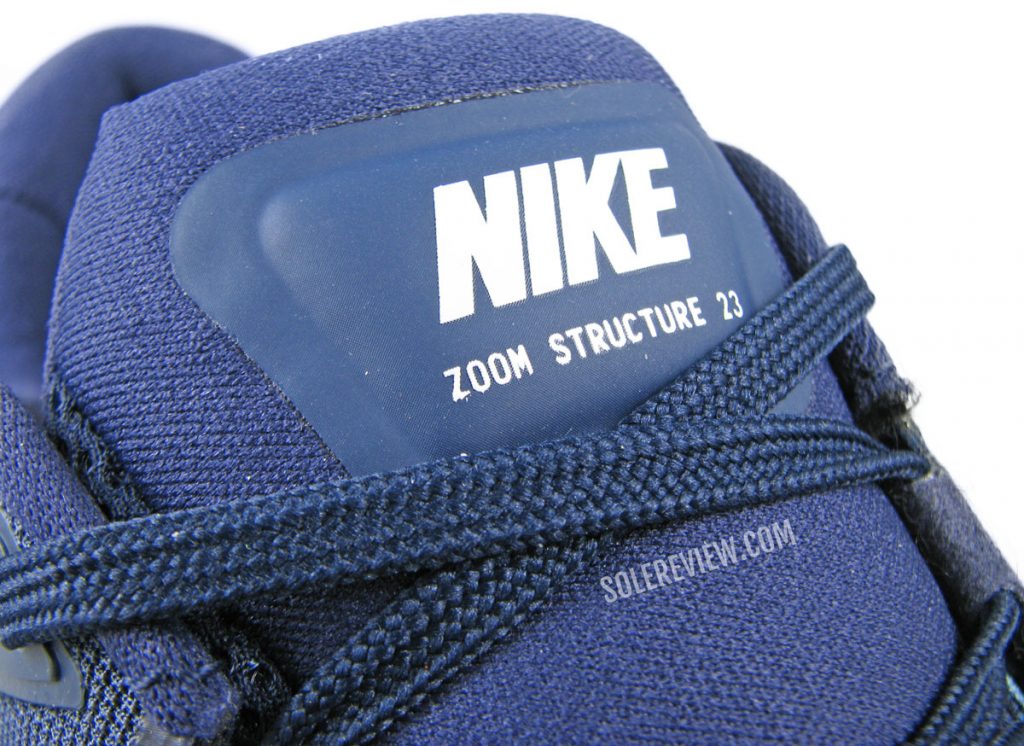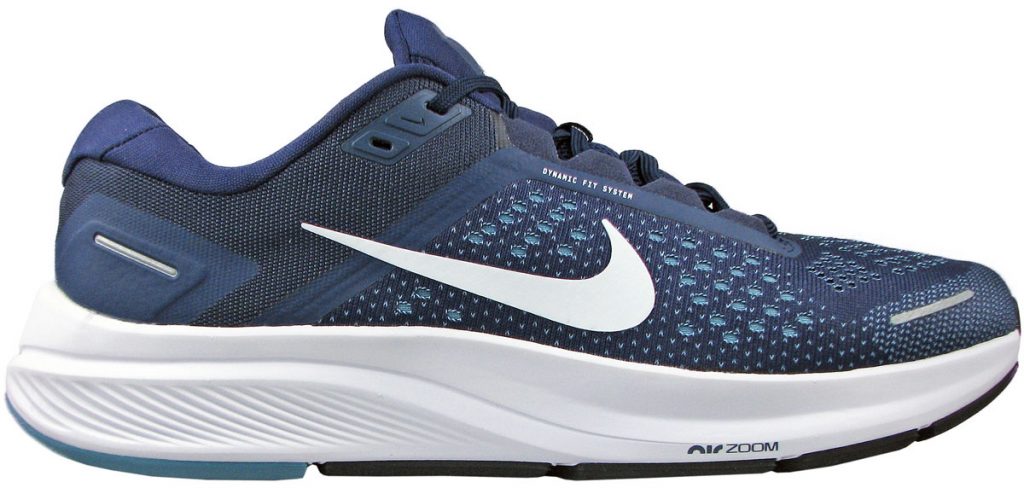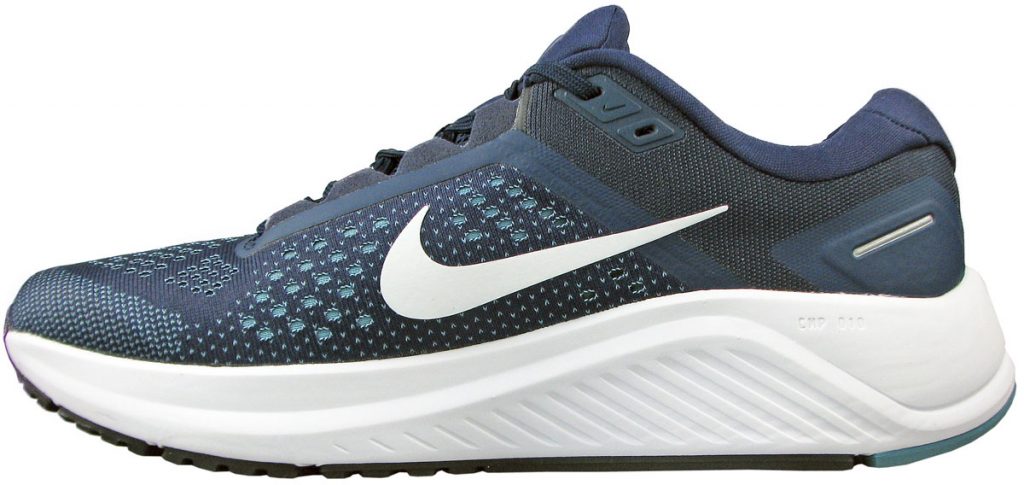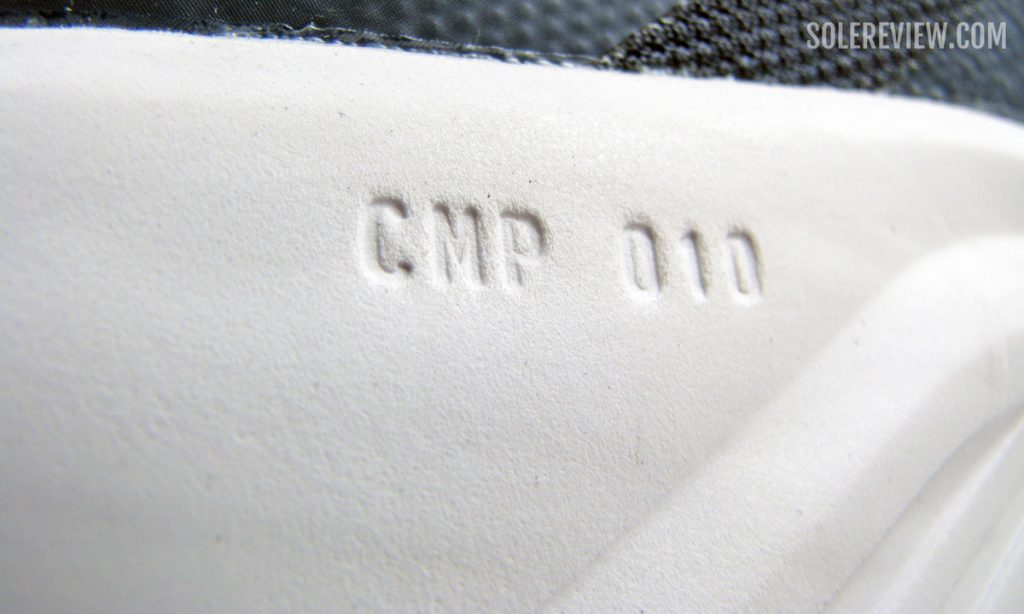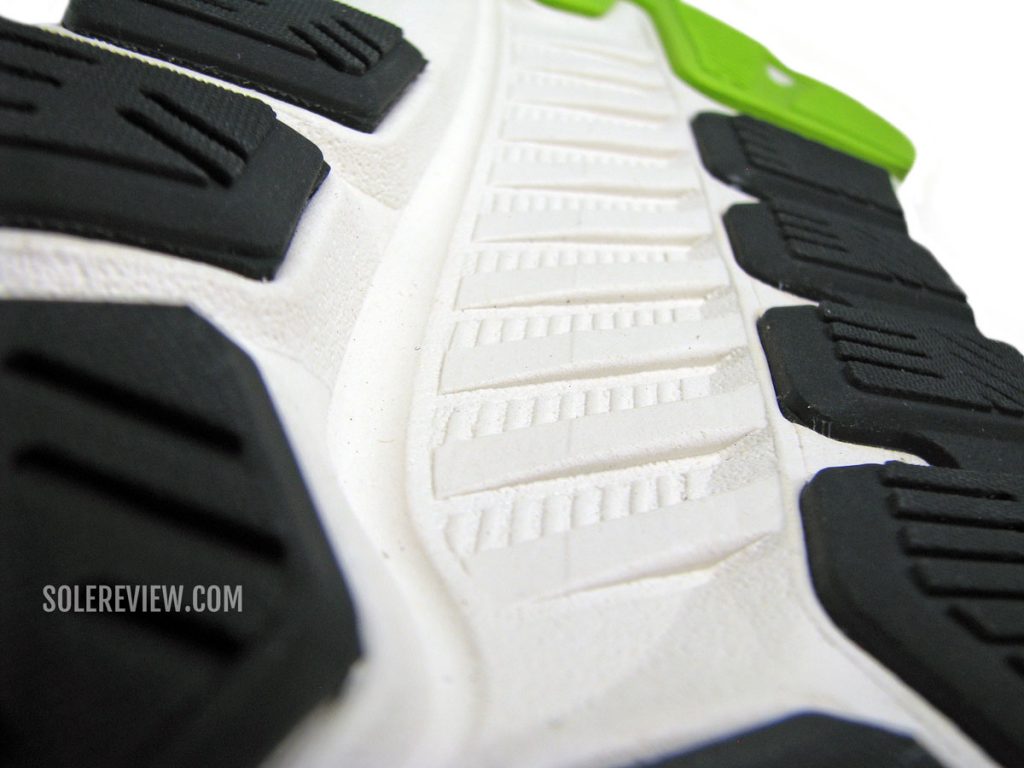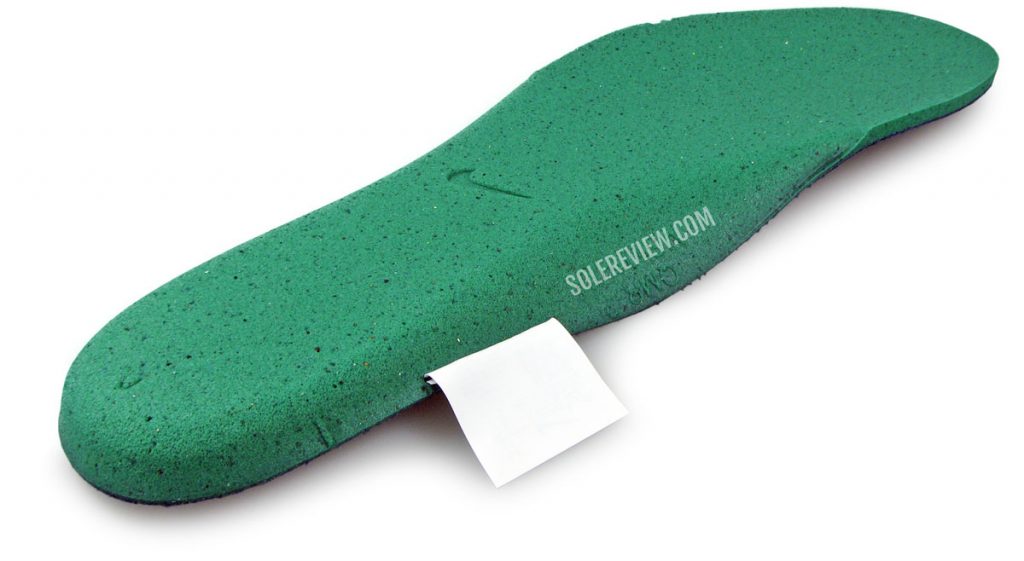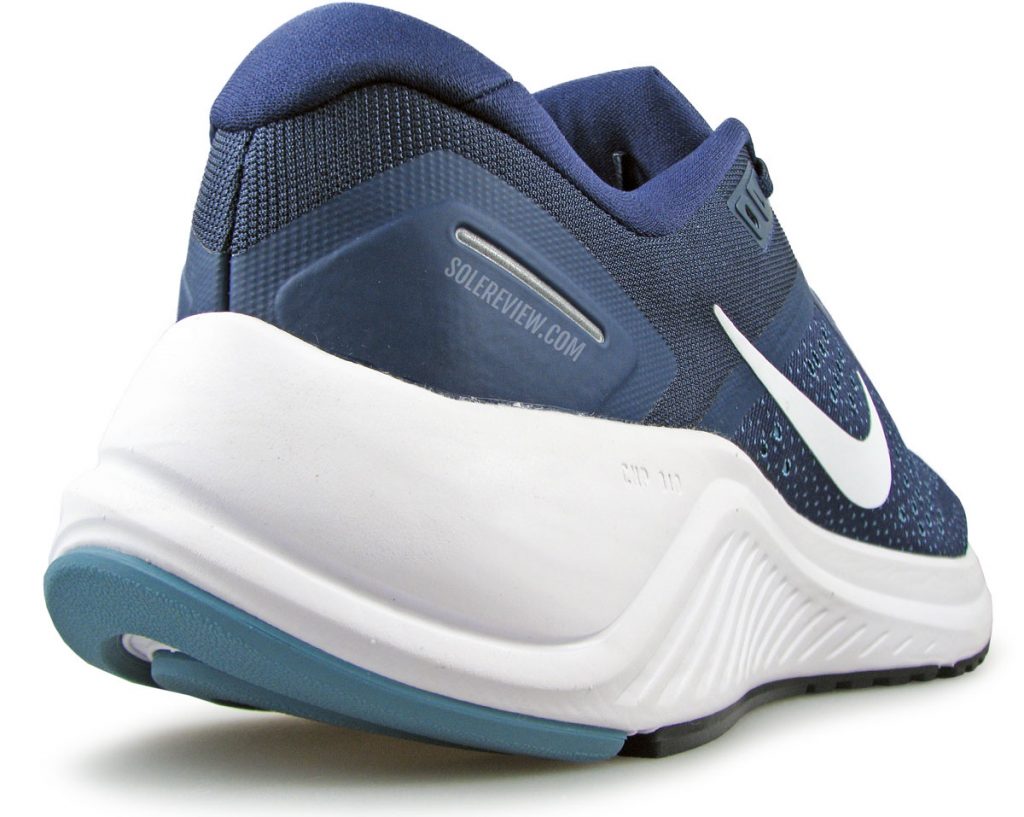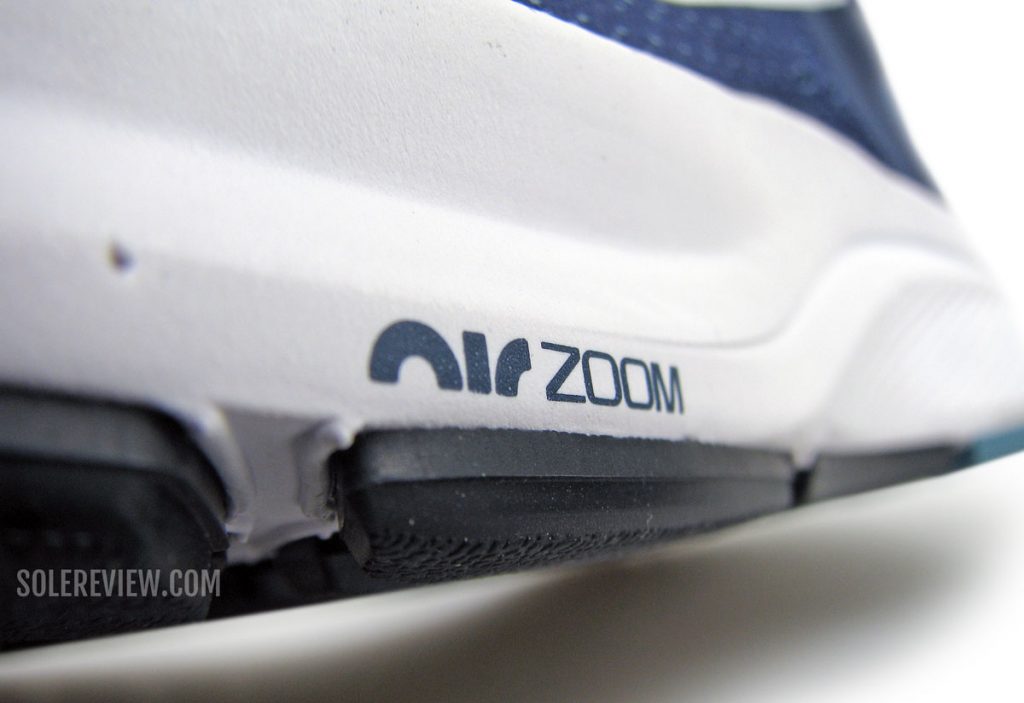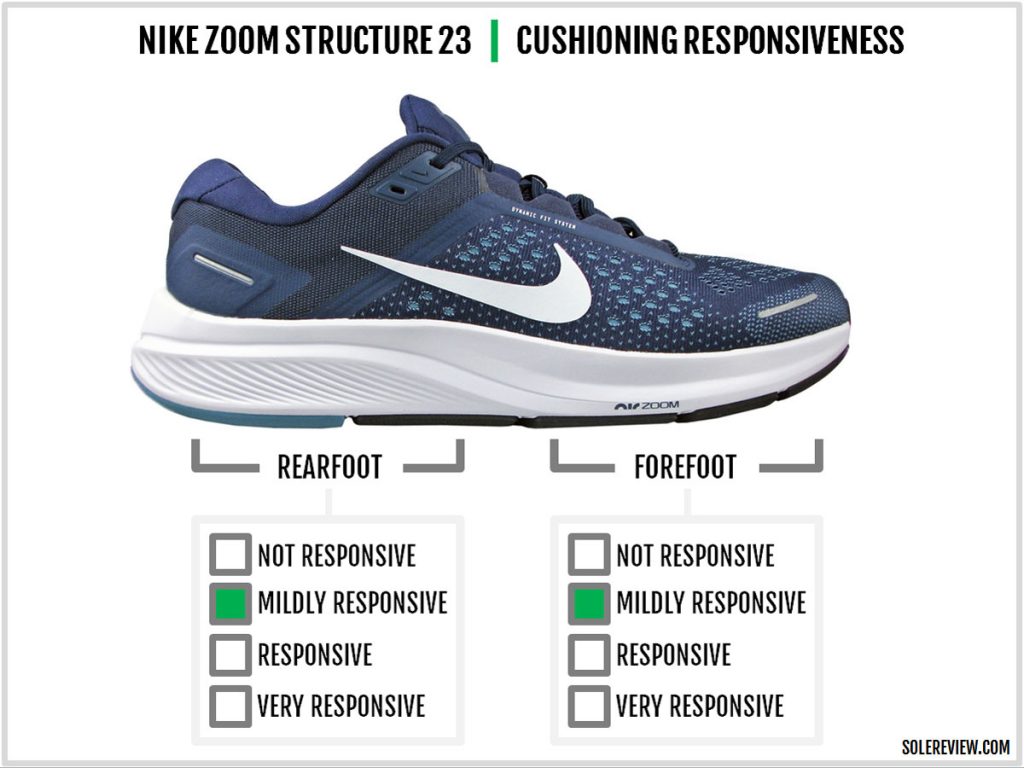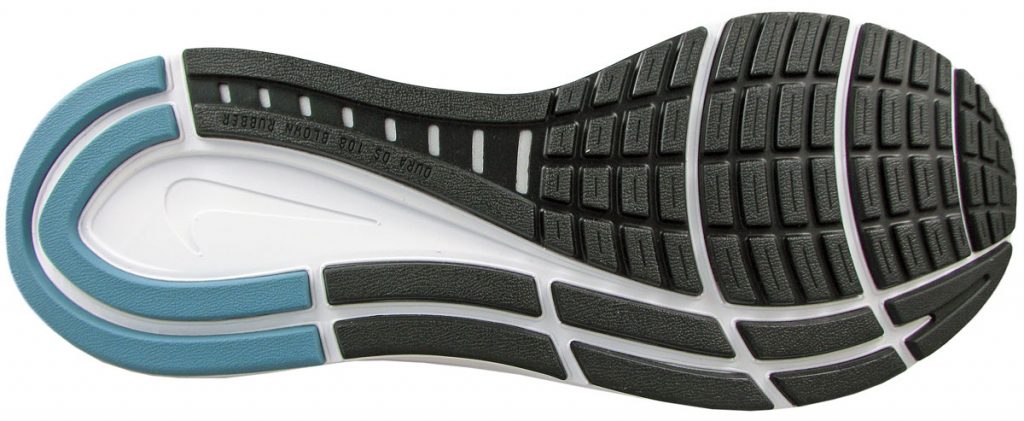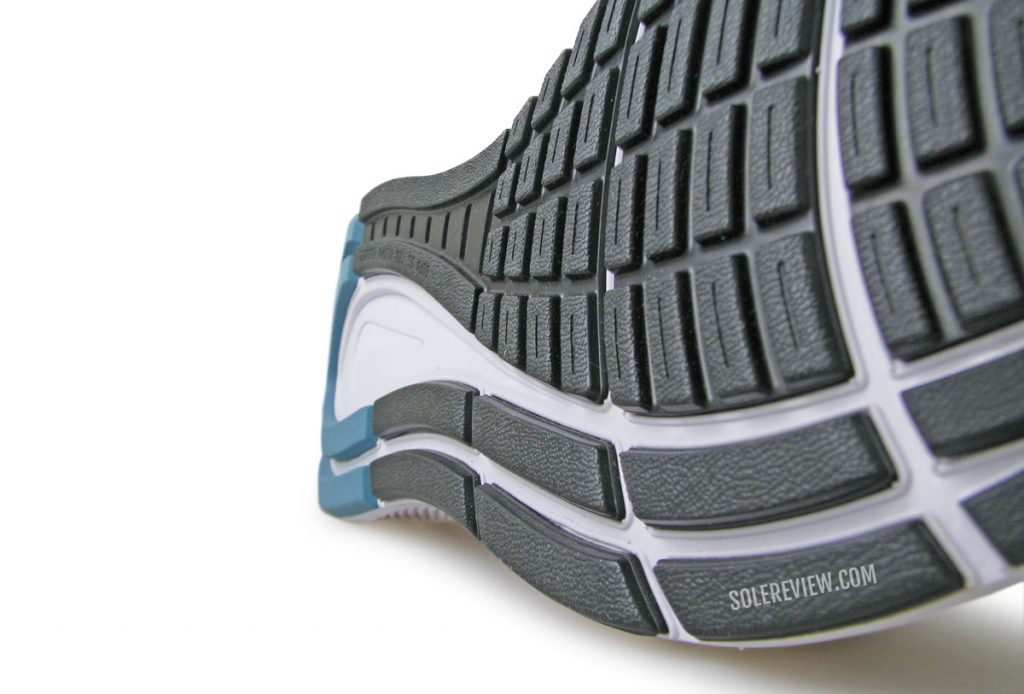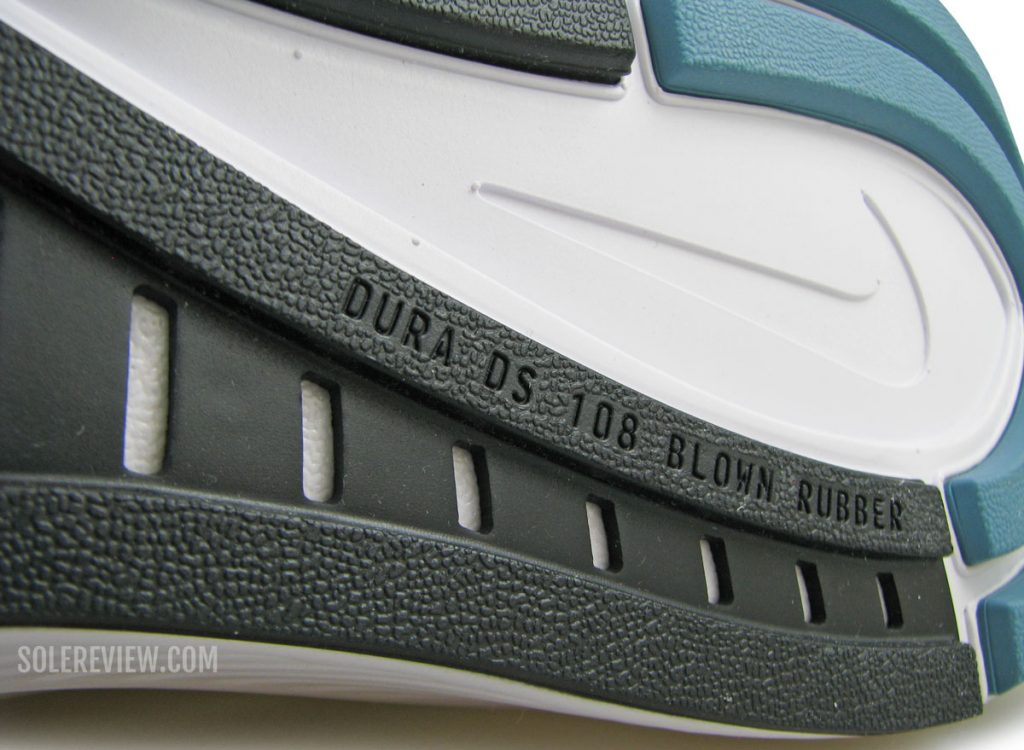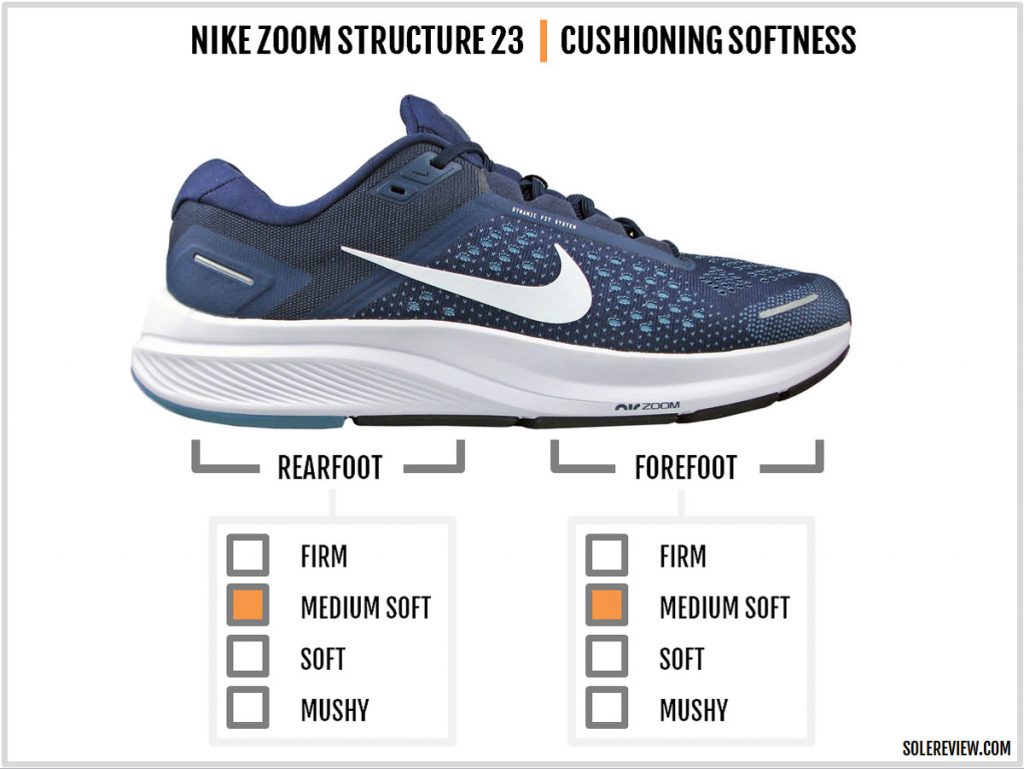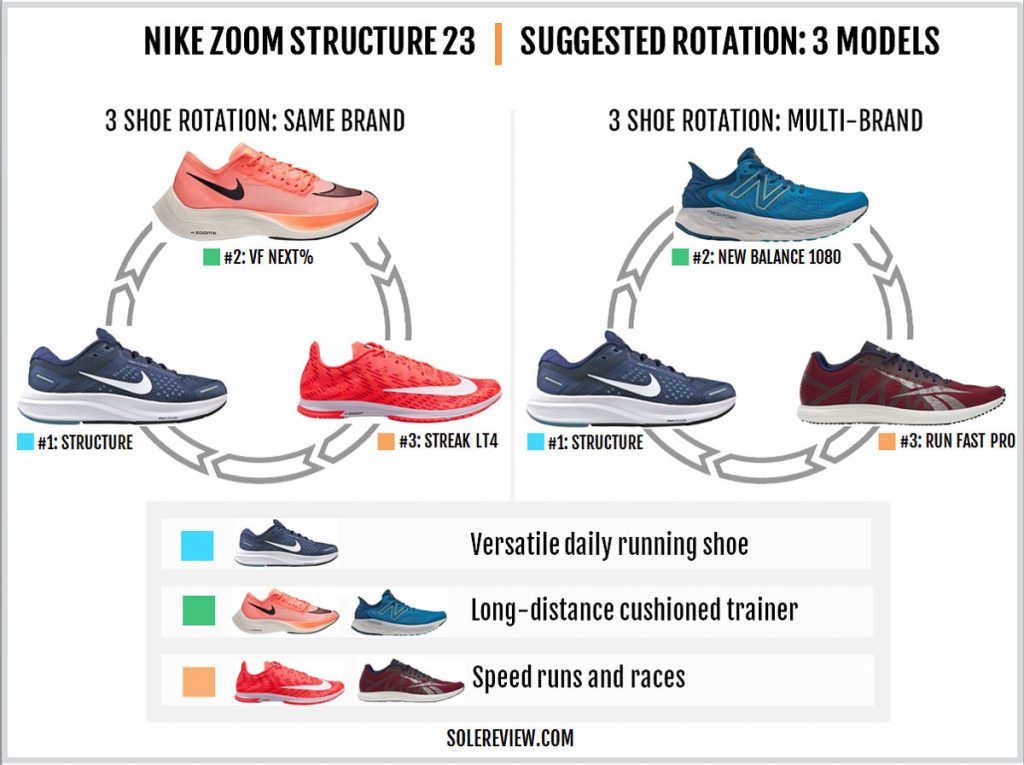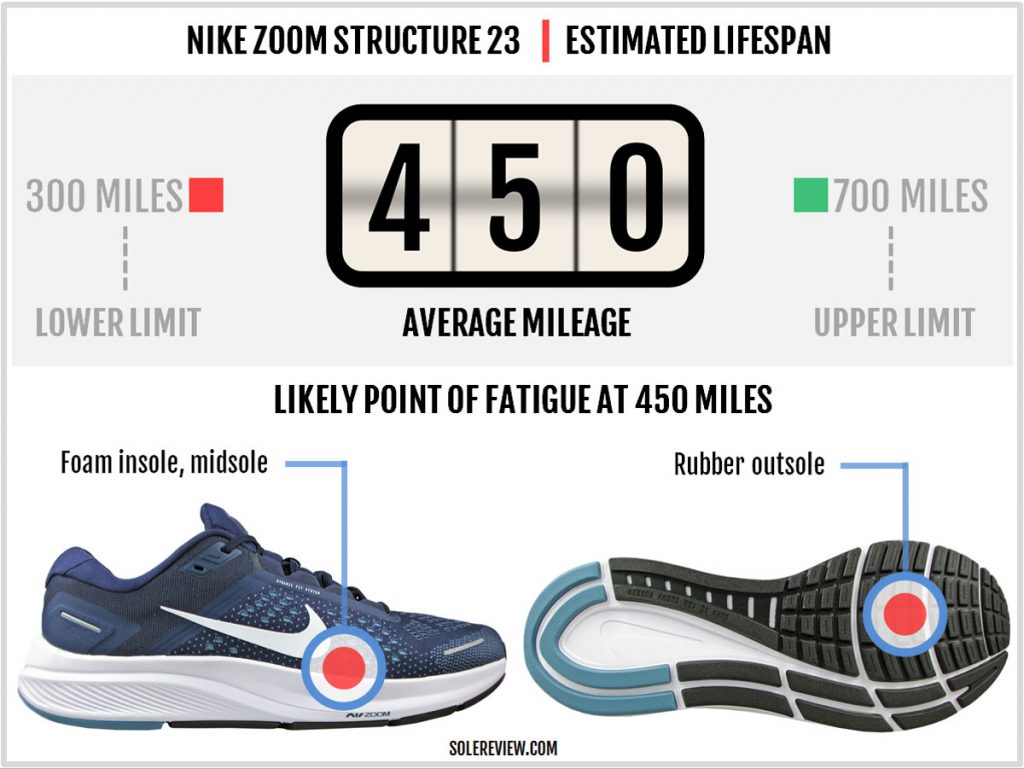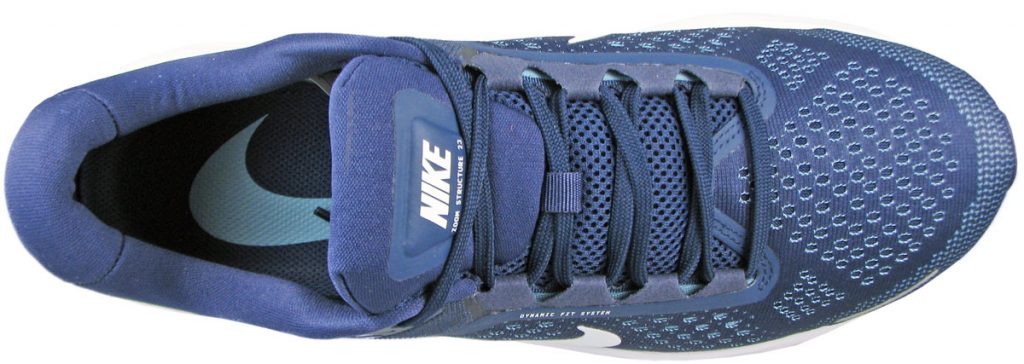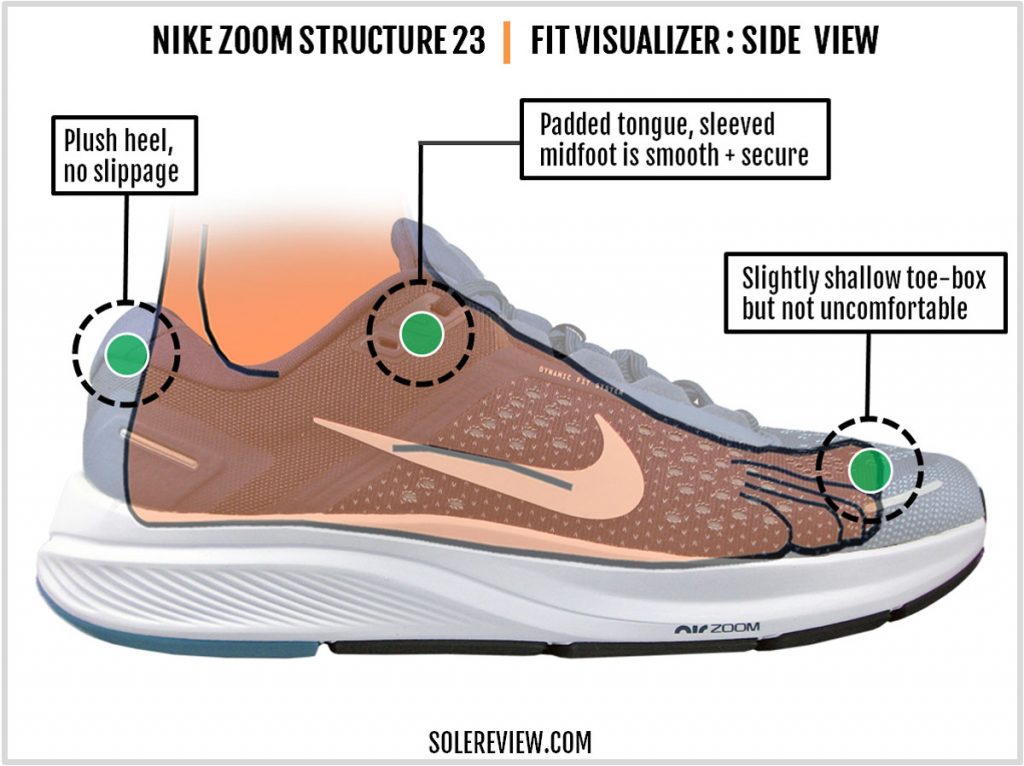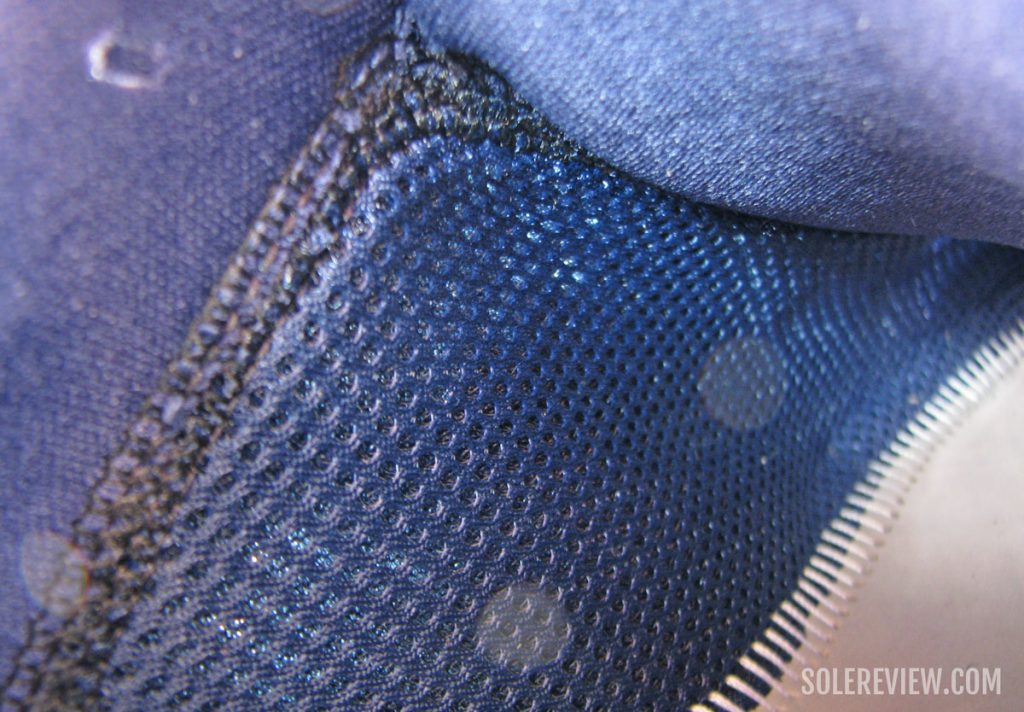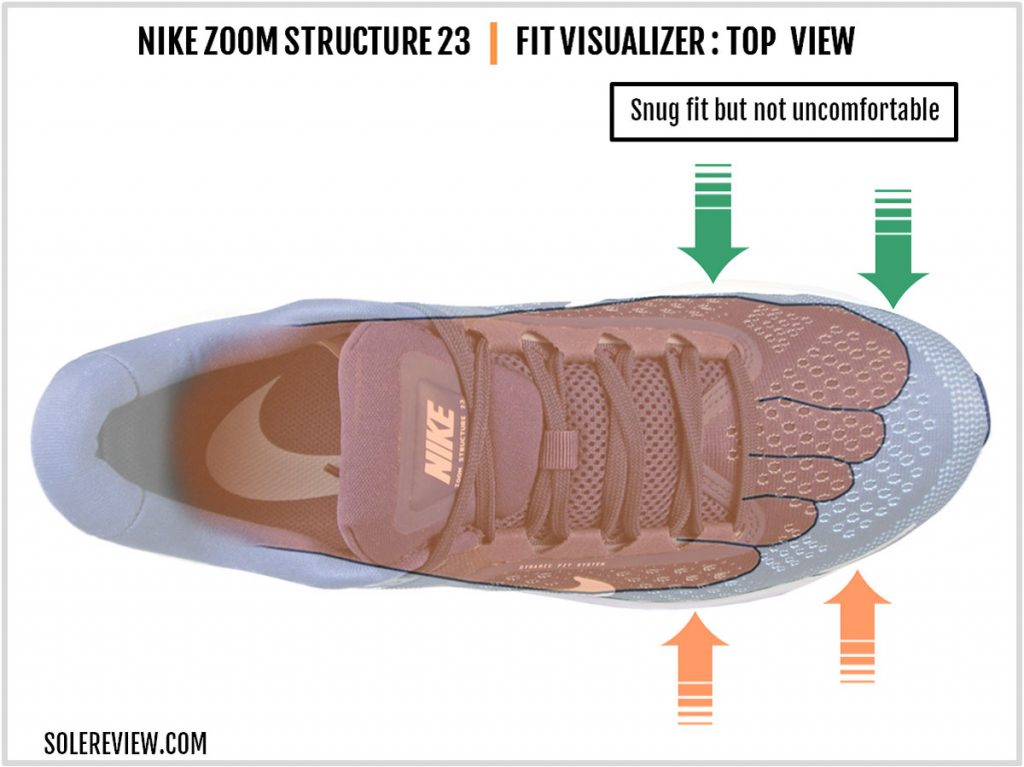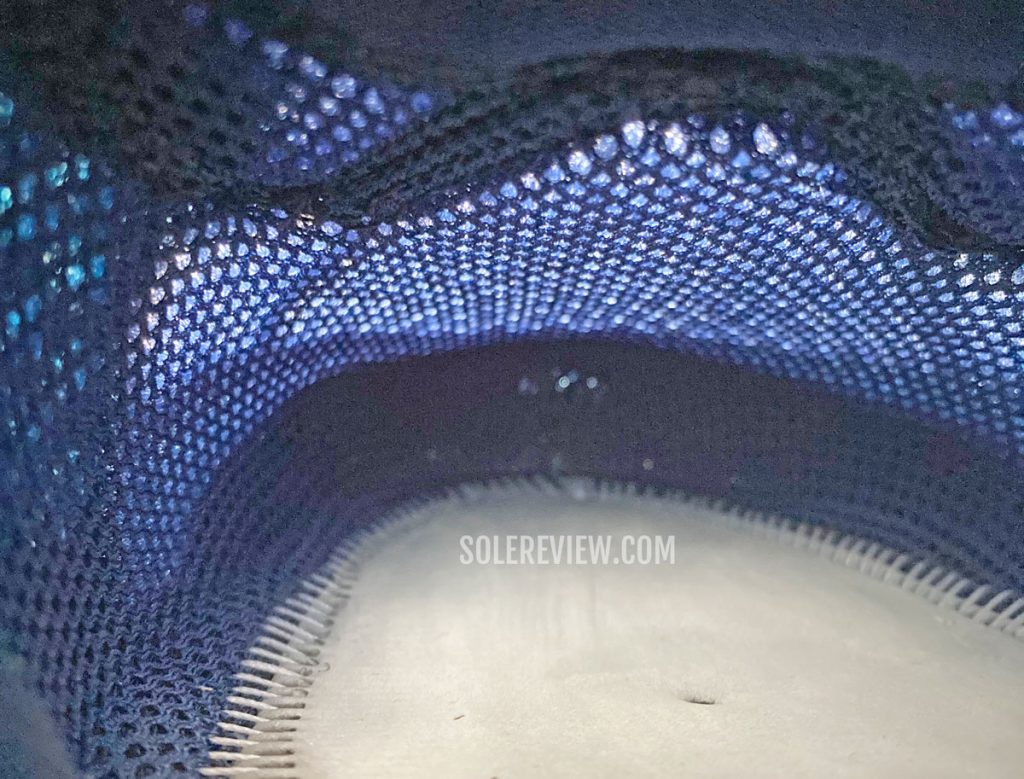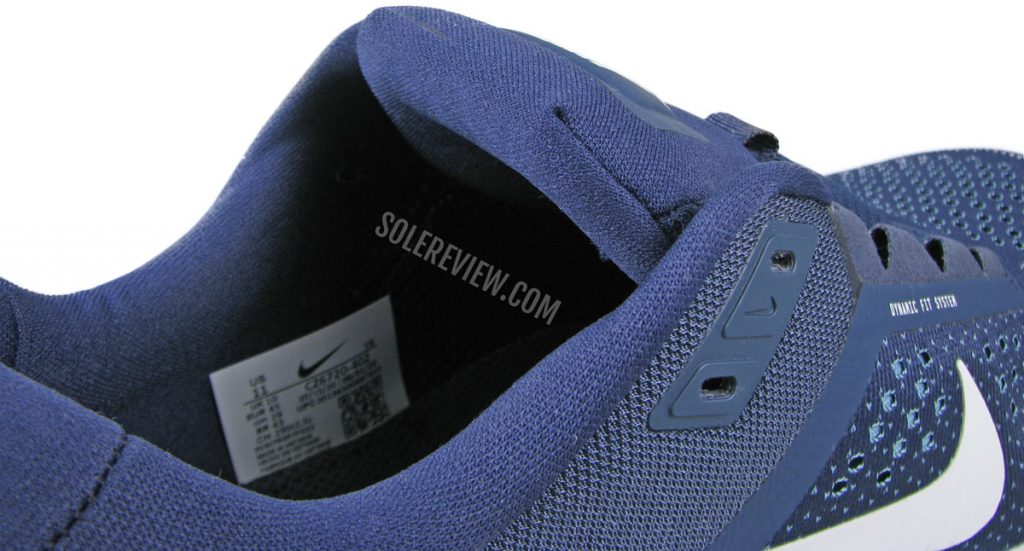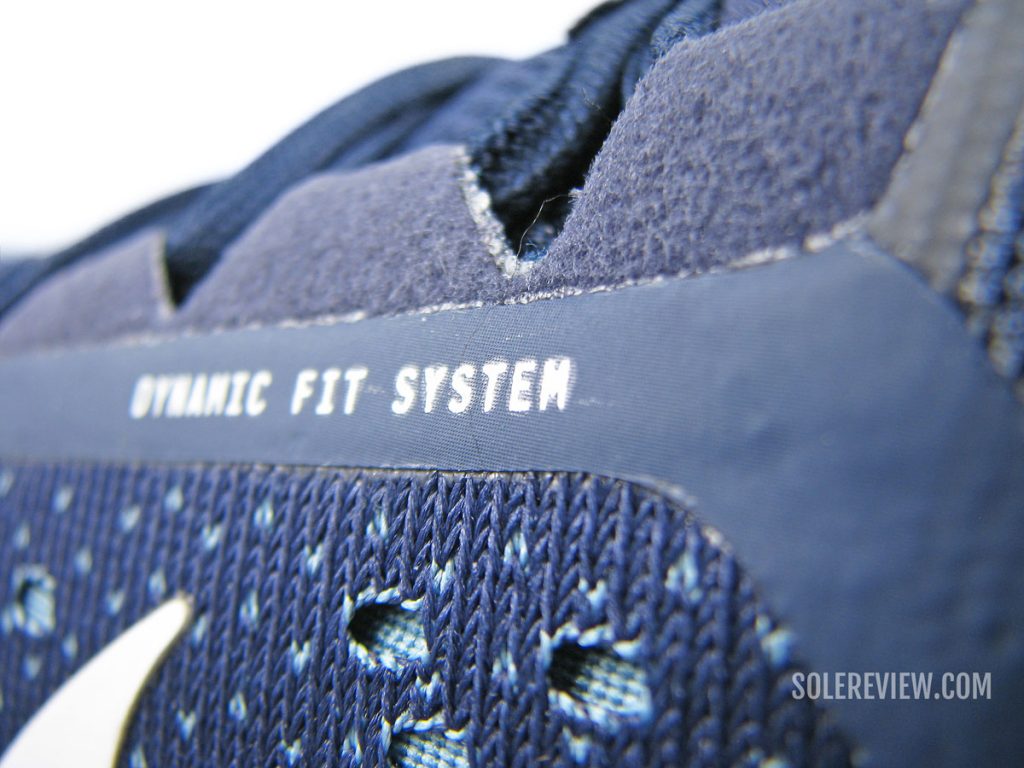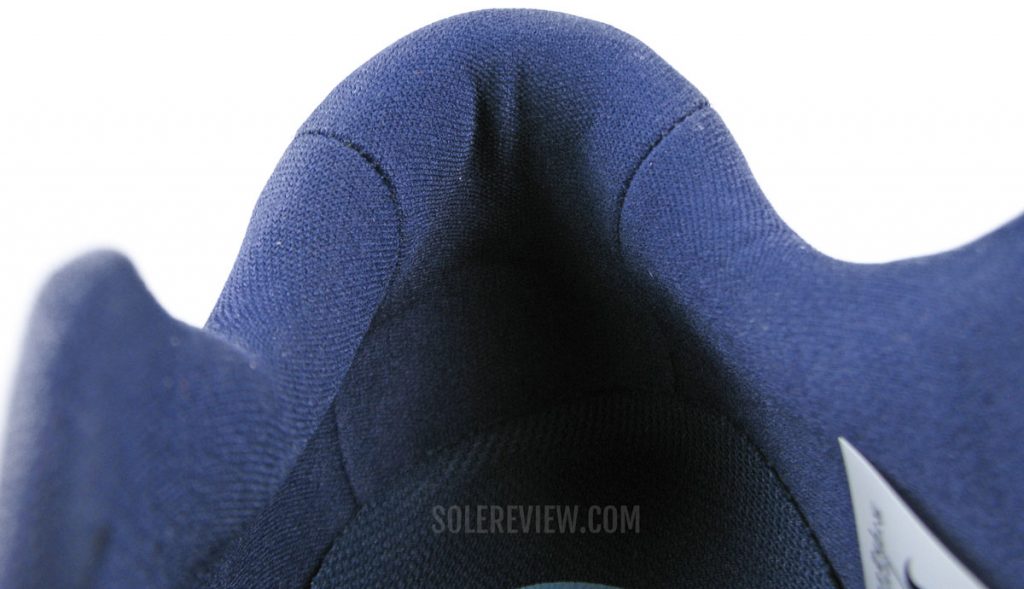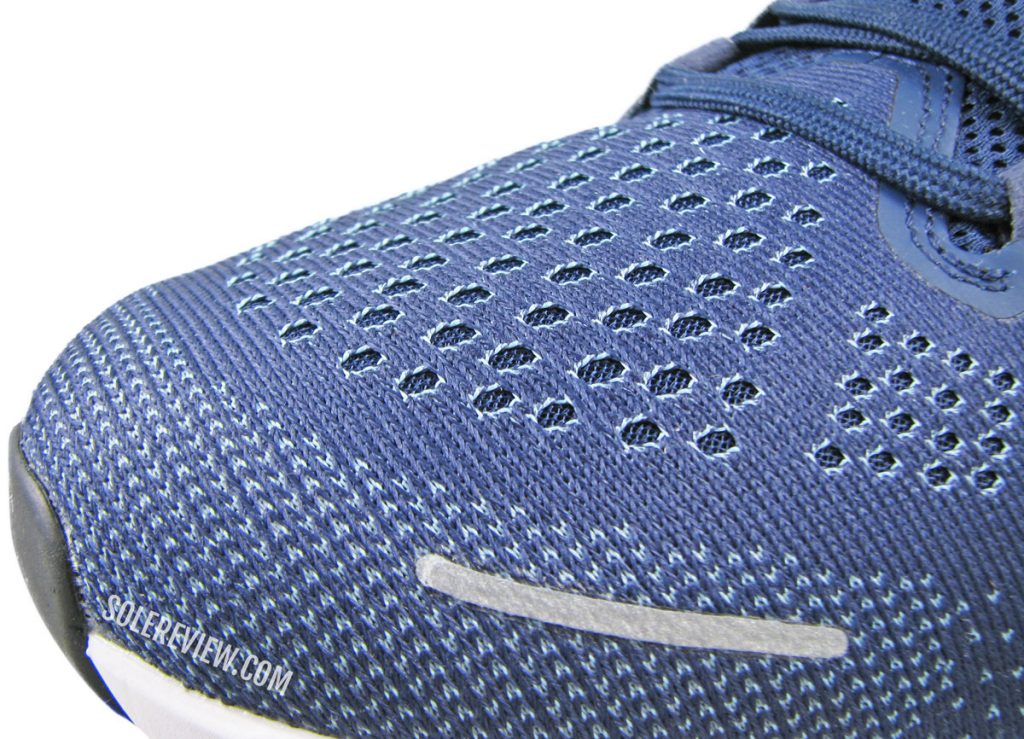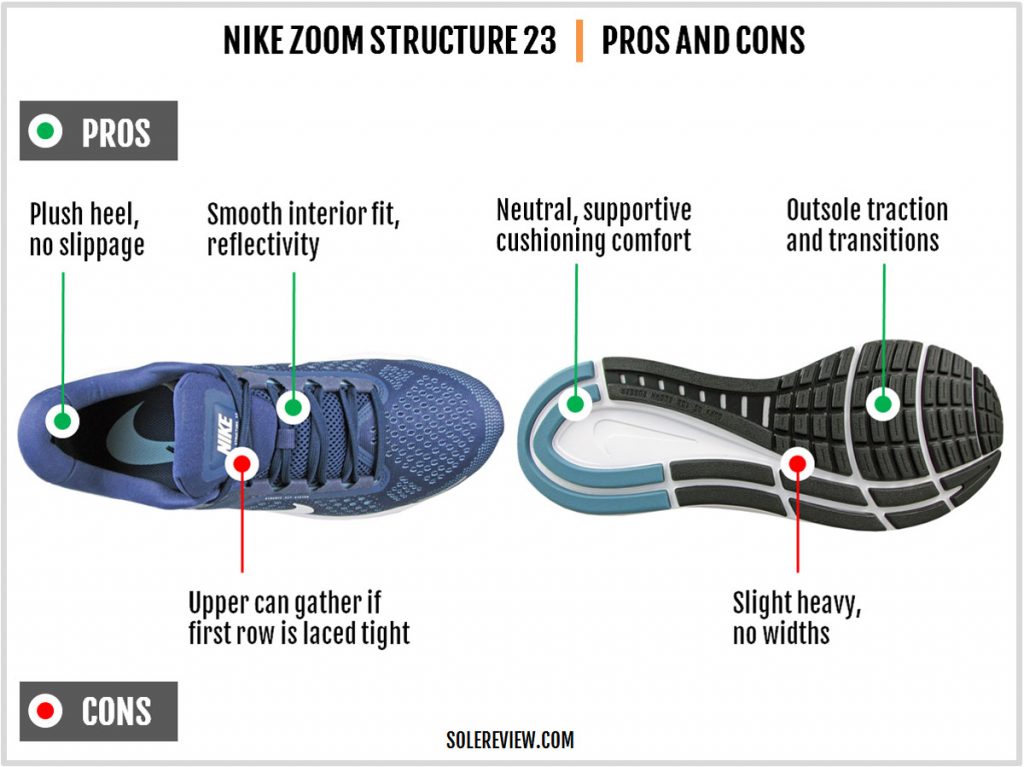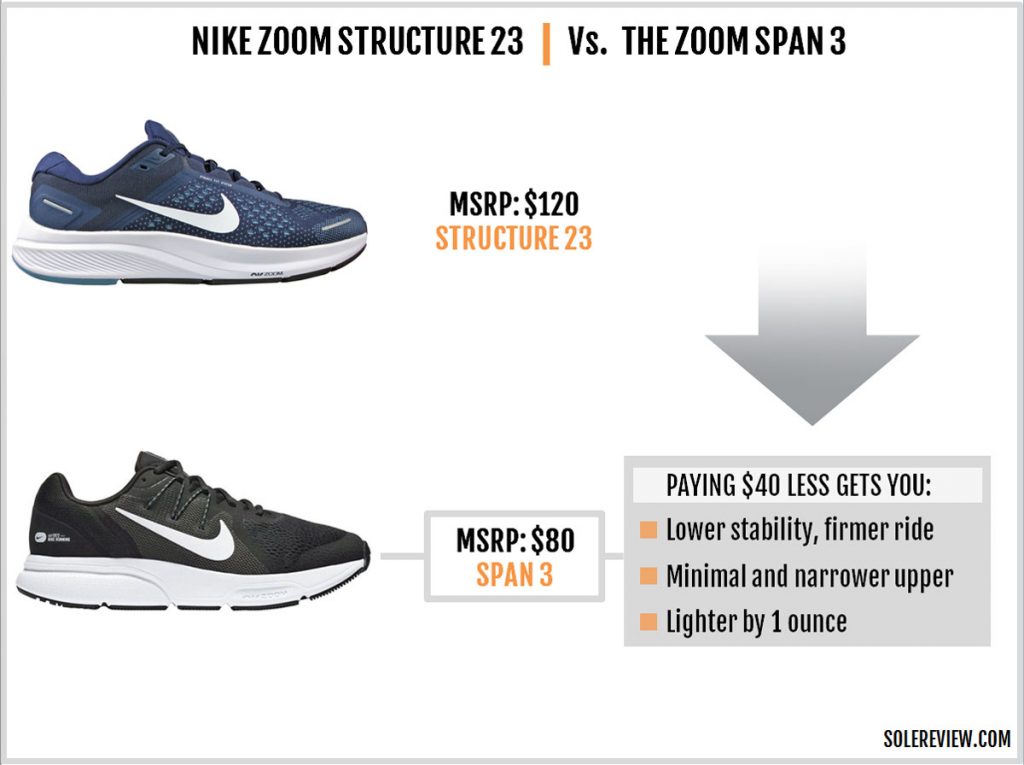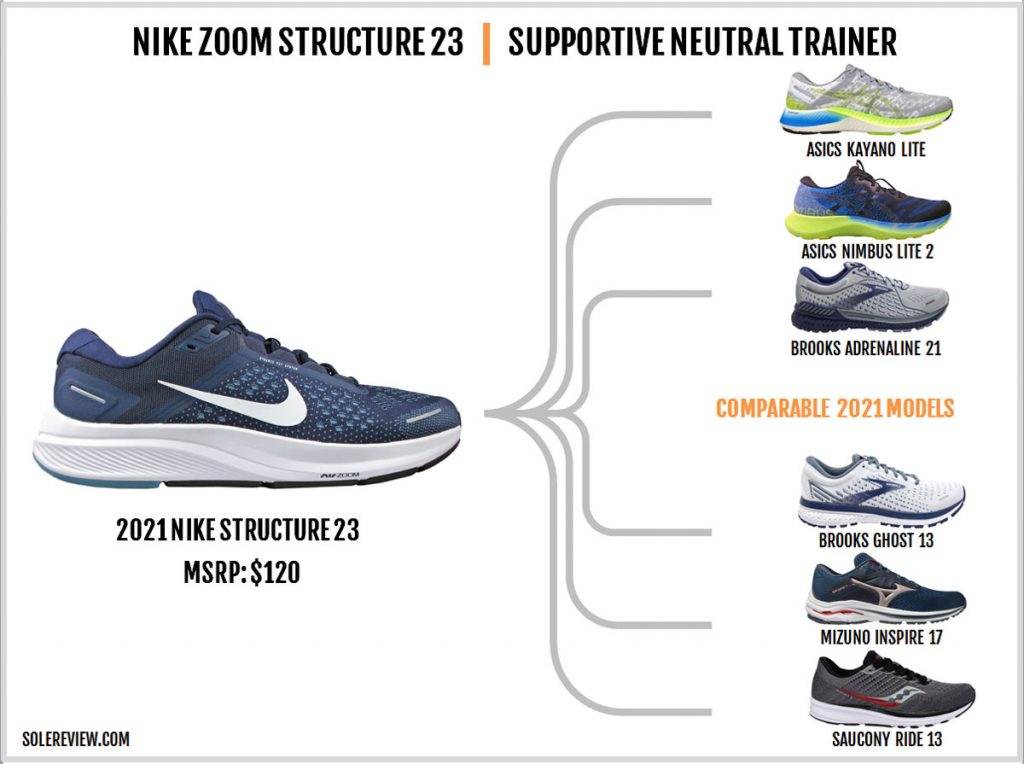INTRODUCTION
Over 5 years ago, Solereview published a review of the Nike Zoom Odyssey – a stability shoe with a humongous medial post. That was the first review in which we remarked that medial posts were useless given the progressive evolution – and improvement – of the running shoe design.
Of course, many disagreed with that view, given how pervasive the traditional stability shoe category was at the time.
Today, running shoes with a medial post are few and far between. Be it Brooks, Saucony, or even Asics – most brands are slowly graduating out of medial posts into a ‘supportive neutral’ template. That, of course, includes the Nike Zoom Structure.
In an alternate universe, the Structure 23 would have been the ideal Pegasus; that one supportive neutral running shoe to do it all.
For once, it’s refreshing to see Nike not use hyperbole when describing this shoe. In their words, the Structure is “made for the runner looking for a shoe they can wear daily.”
After spending the last month with this shoe, we couldn’t agree more. The Structure 23 certainly has the potential to become everyone’s new favorite Nike running shoe.
The Structure 23 isn’t meant for clocking the fastest runs, nor is it the lightest. Current running shoe trends like a Carbon Fiber plate or rocker midsole design are conspicuous by their absence.
However, the Structure 23 doesn’t feel like a compromise at all. All the bits are in their rightful place, just like a recipe with perfectly balanced ingredients.
Everything is where one expects them to be. The midsole has forefoot responsiveness (Zoom Air) but without the disconnected feeling that was a part of the Pegasus 37.
The Structure 23’s upper design will catch most people off-guard. Not because there’s anything wrong with it. Rather, it’s quite the opposite.
The fit is true to size, sleeved, secure, and packed with plenty of tongue and heel plushness. Even the reflectivity isn’t missing. So the newly-found plushness will come as a surprise, given how spartan the Pegasus 37 and Vomero 15 feel in comparison.
Wait a minute. This doesn’t sound like the Nike Structure. The 22 was an ultra-firm, medially-posted running shoe with a snug and serious upper. Going by the name alone, isn’t the Structure 23 an evolution of the 22?
For runners who are long used to the traditional stability shoe behavior of the Nike Structure series, know this – the 23 is not even remotely similar to any of the previous versions.
So, yes; the name is misleading. As far as the old-school Structure is concerned, that’s now water under the bridge.
The Structure 23 is a neutral running shoe, and a very comfortable one too. The midsole softness reminds us of the Pegasus 30, except that the Structure is more supportive.
For runners who have been put off by Nike’s rapidly evolving designs will find comfort and familiarity in the S-23; Nike has a winner here. In short, it’s an excellent daily trainer for all distances, all while being good enough for peppy runs.
THE RIDE EXPERIENCE
Stepping into the Structure 23 is a new but oddly familiar experience.
It’s new, because the 23 is everything that the 22 was not. It’s natural to expect some similarity when the name of the shoe hasn’t changed, but then this is the running shoe industry where anything is possible.
Within just two years, the new Structure has not only ditched its medial post, but also softened the midsole to a degree that is unrecognizable by the V22’s cushioning standards.
At the same time, the shoe feels familiar because it’s reminiscent of the balanced ride character that running shoes once used to have.
We’ve got shoe reviews dating back to over a decade, and a lot of those ‘vintage’ running shoes shared one thing in common – a cushioned and supportive ride with a plush upper to match.
Think of the Brooks Ghost 6. Or the Asics Nimbus 14. None of these shoes were mushy; that meant those were excellent daily trainers even for fast-paced runs.
Then came the era of ‘who has the best midsole foam’, and running shoes became progressively softer. It’s almost as if brands were in a race to find the deep end of extreme softness. And to a great extent, their efforts have been rewarded with success.
Generally speaking, these new materials – like adidas Boost, Asics Flytefoam, Nike ZoomX, and Skechers Hyperburst – have helped create a new generation of running shoes that are lighter and more responsive.
On the flip side, most brands are now making their shoes as soft as possible. While a soft ride is certainly desirable for many runners, it doesn’t work for everyone. Heavier runners, for example, would fare better in a firmer shoe.
And then there are runners who want a blend of cushioning and support, and have no desire to spend a thousand dollars building a 5-shoe rotation. That is why models like Saucony Ride 13 are still very popular.
The Structure 23 is like time-traveling to the past when well-behaved running shoes with a balanced ride were the norm and not the proverbial needle in a haystack.
Instead of using cutting-edge foam like ZoomX or React, Nike relies on CMP foam – which we assume is an acronym for ‘Compression-Molded Phylon’ – an EVA foam.
In addition to the forefoot Zoom Air bag (refer to our Pegasus 37 dissection picture here), Nike employs a couple of minor tricks on the Structure 23’s midsole.
The first is the relatively wide and tall midsole. The sidewalls aren’t as wide as the Asics Kayano Lite, but sufficient to make a difference in the overall stability levels.
The second and rather interesting element is the design of the transition channel under the heel.
The Asics Kayano Lite was the shoe we last reviewed, and it had a similar groove that sloped from the medial/inner side to the lateral midsole.
That made sense, considering that Asics wanted its medial side to be slightly more supportive.
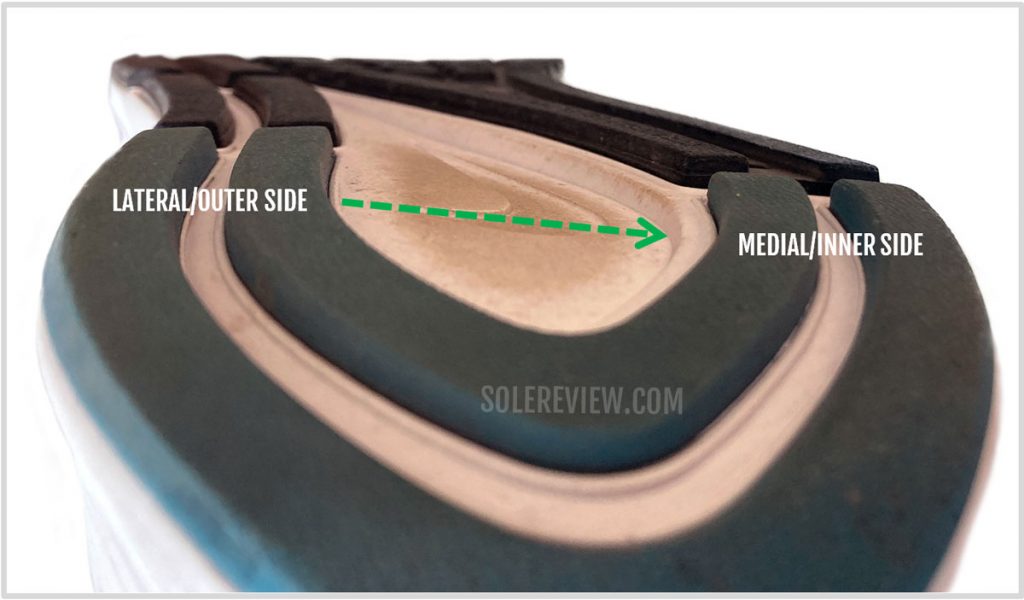
On the Nike Structure, the transition channel slopes from the outer midsole to inner side. Reverse Kayano?
Nike does the opposite. The channel slope from the outer to the inner side, thus giving the outer midsole more structure and firmness under the heel. Though the outer sidewall has a compression groove, the angle of the slope compensates for that.
In functional terms, the cushioning effect of the groove favors the medial side. If one needed conclusive proof that the Structure 23 has left its motion-control persona in the past, this is it.
In the grand scheme of things, the direction of the slope doesn’t exert much influence. And yet, it’s a powerful sign of Nike’s willingness to flip conventional wisdom on its head.
Topping the midsole are two layers of super-squishy foam, namely the lasting and insole. Both create a plush footbed over the moderately soft midsole.
When combined, these design elements produce a predicable ride behavior.
The Structure 23 is a peak neutral shoe; it won’t be a stretch to say it is Nike’s most ‘neutral’ shoe. The cushioning bias is next to none, so there’s zero motion-control behavior that used to be a part of the Structure series.
So why call it the Structure, then? We think that shoe names like the Structure, Pegasus, and the Vomero are big deal for the Oregon-based brand, and the names stand for something – even though the underlying product(s) are nothing like what they used to be.
The EVA midsole feels (vaguely) like a retrofit from an old-fashioned Pegasus 30, but with a few changes. The wider midsole profile makes the ride more stable, and the Zoom Air bag does a great job of blending itself with the foam.
We haven’t cut open the Structure, but we assume that it’s the same forefoot Zoom Air bag as the Pegasus 37. That means flex grooves allow the pressurized bag to bend during the transition phase and also reduce the stiffness.
During runs, the Zoom Air bag doesn’t feel like a separate component. Nor do the rearfoot and forefoot softness differ noticeably.
Yes, the Zoom Air bag adds a pleasant pop during forefoot transitions, but it works discretely without making its presence known. This is perhaps one of the best Zoom Air + foam executions we’ve experienced in a Nike running shoe.
The ride smoothness and reasonable 8 mm heel-to-toe offset result in foot-strike versatility. The outsole also plays an important role in bettering the transitions – Nike uses a tried-and-tested design that hasn’t changed much since the Pegasus 31.
On one side are segmented strips that run the length of the outsole. The small lugs on the forefoot and midfoot are made of soft blown rubber that grips well while cushioning the landings and take-offs. The Structure 23 uses harder rubber, but only at the heel and forefoot tip.
Thus, runners who do not land rearfoot will benefit from the Zoom Air bag-equipped forefoot as well as the softer outsole. The landing and the resulting loading process doesn’t feel lazy at all.
The ride character has a sense of urgency, a trait that is very helpful when the digits on the GPS watch tick faster – at say, above speeds of 7 min/mile or 4:30min/km. The foam density isn’t mushy at all, yet manages to deliver the comfort that makes longer runs easy on the feet.
The heel has a decent bevel angle. This prevents the midsole edge from catching the ground for rearfoot strikers – another running best practice that we’d love to see on every shoe.
As things stand, the Structure 23 is capable of most things running-related. It’s comfortable and easygoing (enough) for relaxed daily mileage that happens in the pace range of 10min/mile or 6min/km.
There’s also enough midsole under the foot to go the distance, making the Structure marathon-capable as well. The plush upper is a good thing to have too – something that we’ll also cover in this review.
If we’re talking about Nike, suggesting a 3-shoe rotation is a cake. The Vaporfly Next% takes care of long-distance runs with its spring-loaded midsole, and the Streak LT4 is excellent for those blazing quick 5 and 10K runs. For everything in between, there’s the Structure 23 – the new king of dumb reach.
One can, of course, substitute the Next% with the New Balance 1080V11 for long-distance runs, and buy the featherweight Reebok Run Fast Pro for speed works.
If you have the money to spare, the ideal rotation would be two Nikes and a Reebok.
IS THE NIKE STRUCTURE 23 DURABLE?
The Nike Structure 23 is a very solidly built shoe. The double layering of the upper gives it sufficient reinforcement, and the compression-molded midsole isn’t going to flatten in a hurry.
The outsole has barely scuffed in 50 miles, so we expect more than 450 miles out of this shoe. The flat lug profile and articulation help spread the wear and tear evenly.
THE UPPER DESIGN AND FIT
The insides of the Structure’s upper feel like a familiar place. There used to be a time when running shoes had plush uppers with an abundance of foam padding around the heel and tongue.
That’s not the trend these days. Even Nike models like the Pegasus 37 and Vomero 15 – supposedly comfortable neutral trainers – feel like they have been fed on a calorie-restricted, low-foam diet. Their tongue(s) feels like a retrofit from the Zoom Streak, and their uppers look – minimal?
So when the Structure bucks that trend of ultra-minimalist uppers and flat tongues, it’s a new experience. It’s very unlike Nike’s ongoing love affair with flat tongues and minimalist Vaporfly-inspired upper designs.
Like many Nike models, the Structure 23 has a full sleeve that begins near the tongue and extends to the tip. This double-layered set-up adds a lot of smoothness and fit security but eats into a bit of forefoot room.
While the fit runs true to size, there’s some snugness on the sides and a barely-there toebox ceiling. The fit is very good at locking the foot down, but the space-consuming effects of the inner sleeve are undeniable.
And it’s not just a sleeve made of thin fabric. One of the reasons why the interiors are so comfortable is that the Structure 23 uses a spacer mesh for its sleeve. When squished between your fingers, the mesh responds with a certain amount of spongy give.
By itself, the toe-box has a broad profile. It’s the spacer mesh sleeve adding some snugness. This isn’t new for Nike; some past running shoes like the Pegasus Turbo have used a similar spacer mesh sleeve.
The tongue isn’t anemic, thank goodness. It’s plump as a tongue can be. It’s brimming with foam and does a fantastic job of filtering the lacing pressure.
With the Structure’s lacing, Nike goes old school with a strap-based system. While it is effective in securing the midfoot, it needs some work to get it right.
The laces pass through the straps with some friction. This means that tightening the midfoot isn’t just about tugging on the last few lacing rows. Much like a pair of boots, the forward rows need to be worked on separately. Now depending on the foot shape, that may lead to a small problem.
When the first lacing row is cinched tight, the upper material tends to bunch. It’s not a big deal, but hey – we’re reviewing a shoe here. Maybe an Asics Novablast-style notches might help the next time.
Otherwise, the upper is thoughtfully designed without any compromise.
The foam-packed collar and the internal counter grip the heel very well; worth noting is the use of a ‘traditional’ design instead of the flared Origami heel that is the norm. There’s an extra lacing row should a runner’s loop become necessary.
There are not one, but three reflective strips. Full-sized logos keep the midfoot propped up on both sides (some Nike running shoes use only one-sided logos), and the perforated details on the side panels add cosmetic detail.
It is still a warm shoe though, so you might want to look at something else for hot weather running. For cooler days, the upper is perfect.
PROS AND CONS
The Structure 23 is an extremely versatile running shoe that gets nearly everything right. The ride is smooth and cushioned with a bit of forefoot pop. The full outsole grips well and adds value to the transition process and overall durability.
The upper is very plush, fits smoothly, and true-to-size. The forefoot and toe-box are secure, and clever touches like the three reflective strips are pleasant elements of discovery. The lacing system could be improved though.
The full sleeve makes the insides warm during the hotter months, but then, the same lining makes the shoe suitable for colder weather. So a warm upper isn’t necessarily a negative, but rather something to consider before buying.
THE NIKE STRUCTURE 23 VS. NIKE SPAN
Over a decade ago, the original Nike Zoom Span was designed to be a toned-down version of the Structure. In those days, both the models had medial posts due to their ‘stability’ positioning.
Today, neither shoes have a medial post; both are supportive neutral shoes. The difference between the latest Span 3 and Structure 23 is the level of ride support, cushioning, and the overall upper plushness levels. The Structure is also roomier than the Span.
The Span is also a much cheaper shoe. It retails at $80, so the $40 price difference reflects in the lower trim level.
Our recommendation? Just stick to the Structure.
SHOES SIMILAR TO THE NIKE STRUCTURE 23
It is likely that someone at your local running shoe store will suggest models like the Asics GT-2000 9 or New Balance 860 as comparable to the Nike Structure, given the latter’s stability shoe history. But the Structure 23 is nothing like anything from the traditional stability shoe universe, so such comparisons are moot.
Instead, we suggest models like the Asics Kayano Lite (review here) and the Brooks Adrenaline GTS 21 (review here) if you’re looking for something similar at a conceptual level. The Kayano Lite is a cushioned and supportive neutral-ish shoe with a plush upper, and the same goes for the Brooks GTS.
The Nimbus Lite 2 and Brooks Ghost 13 (review here) are slightly pared-down versions of the Kayano Lite and Brooks Adrenaline, but one still gets a comfortable and stable ride quality with a nice upper.
Brooks has discontinued the Ravenna and replaced it with the Launch 8 GTS. This new model is just the Launch with raised sidewalls, so from a performance standpoint, this is a lightweight and cushioned shoe that is also good for fast runs.
It’s hard to categorize the Mizuno Wave Inspire 17 as a neutral or stability shoe, because it’s a bit of both. The plastic Wave plate adds the familiar Mizuno stability, whereas the now-softer foam midsole creates a cushioned ride that also feels nimble.
The Saucony Ride 13 (review here) isn’t that similar to the Structure. Nonetheless, we’ve included it as a versatile daily trainer with a firm ride – if that’s what you’re looking for.
Do you own this shoe? Improve this review by sharing your insights – submit a review here.

